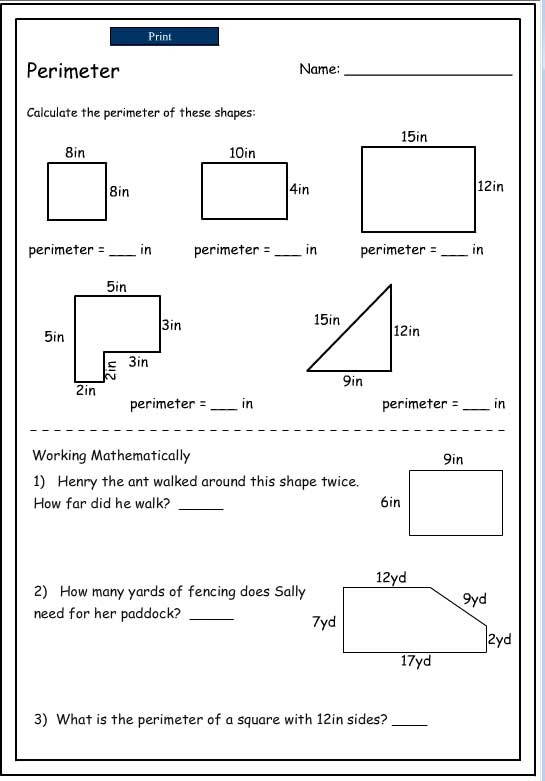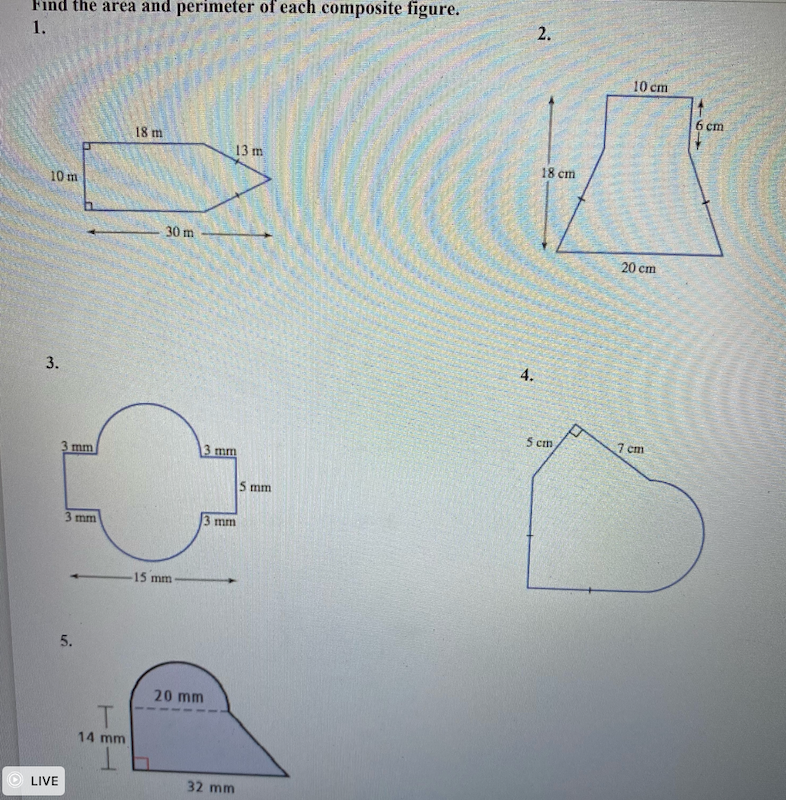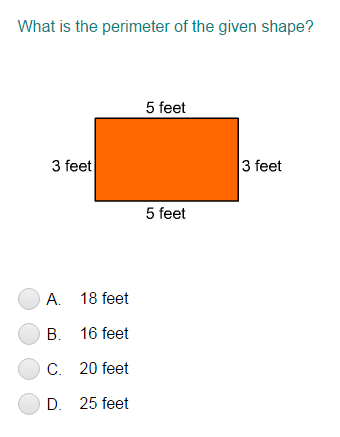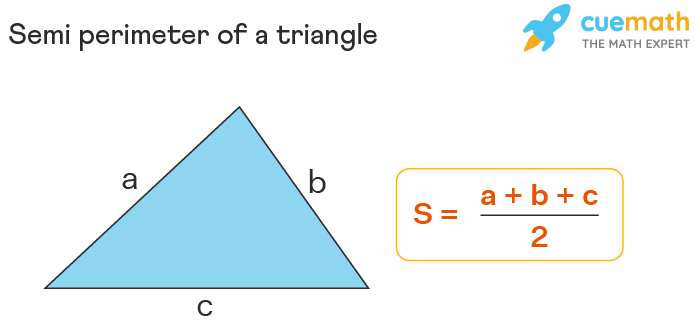Topic to find the perimeter of a rectangle: To find the perimeter of a rectangle, start by measuring its length and width. Add these two dimensions together and multiply by two to get the total perimeter. This simple formula helps in various practical applications, from framing pictures to building fences. Understanding this concept is essential for solving many real-world problems effectively.
Table of Content
- How to Find the Perimeter of a Rectangle
- Introduction to Perimeter
- Definition of a Rectangle
- Basic Formula for Perimeter Calculation
- Examples of Perimeter Calculations
- Common Mistakes to Avoid
- Advanced Perimeter Concepts
- Tools and Resources for Perimeter Calculation
- Frequently Asked Questions
- Conclusion
- YOUTUBE: Video hướng dẫn cách tìm chu vi của hình chữ nhật. Tham gia cùng Mr. J để học cách tính toán chu vi một cách dễ dàng và chính xác.
How to Find the Perimeter of a Rectangle
The perimeter of a rectangle is the total distance around the edges of the rectangle. The formula to calculate the perimeter is straightforward and can be applied easily.
Perimeter Formula
The formula for the perimeter of a rectangle is given by:
\[ P = 2(l + w) \]
Where:
- \( P \) = Perimeter
- \( l \) = Length of the rectangle
- \( w \) = Width of the rectangle
Steps to Calculate the Perimeter
- Measure the length of the rectangle.
- Measure the width of the rectangle.
- Add the length and width together.
- Multiply the sum by 2.
Example Calculation
Consider a rectangle with a length of 10 cm and a width of 5 cm. Using the perimeter formula:
\[ P = 2(10 + 5) = 2 \times 15 = 30 \text{ cm} \]
Applications of Perimeter Calculation
- Determining the amount of material needed to build a fence around a rectangular garden.
- Calculating the length of trim needed to go around a rectangular window or door.
- Finding the distance you would walk if you walked around a rectangular park.
Practice Problems
| Length (l) | Width (w) | Perimeter (P) |
|---|---|---|
| 8 cm | 6 cm | \( P = 2(8 + 6) = 28 \) cm |
| 15 m | 10 m | \( P = 2(15 + 10) = 50 \) m |
| 25 ft | 20 ft | \( P = 2(25 + 20) = 90 \) ft |
By understanding and applying this formula, you can easily find the perimeter of any rectangle given its length and width.

READ MORE:
Introduction to Perimeter
The perimeter of a rectangle is the total distance around its outer edge. It is a fundamental concept in geometry, essential for understanding the properties of rectangles and for practical applications such as calculating the amount of material needed to fence a yard or frame a picture. The formula to find the perimeter (P) of a rectangle is given by:
\[ P = 2 \times (L + W) \]
Where:
- L is the length of the rectangle
- W is the width of the rectangle
Understanding how to find the perimeter helps in solving various real-world problems. For instance, if you know the perimeter and one dimension of a rectangle, you can determine the other dimension. The formula can be rearranged as follows to find the missing length (L) or width (W):
- \[ L = \frac{P}{2} - W \]
- \[ W = \frac{P}{2} - L \]
This step-by-step approach ensures a comprehensive grasp of how to measure and apply the perimeter of a rectangle in different scenarios.
Definition of a Rectangle
A rectangle is a four-sided polygon, known as a quadrilateral, with each interior angle being a right angle (90°). It is a special type of parallelogram where opposite sides are parallel and of equal length. The characteristics of a rectangle include:
- Four sides
- Four right angles (each 90°)
- Opposite sides are parallel and equal in length
- Two dimensions: length (longer side) and width (shorter side)
- Two equal diagonals that bisect each other
The rectangle's properties make it a fundamental shape in geometry, often used to define areas and perimeters in various practical applications.
To visualize a rectangle, consider a simple door frame or a book cover, which both exemplify the defining characteristics of this shape.
Basic Formula for Perimeter Calculation
The perimeter of a rectangle is the total length around the rectangle. To find the perimeter, you sum up the lengths of all four sides. Since opposite sides of a rectangle are equal, the formula can be simplified. Here's how to calculate it step-by-step:
- Identify the length (l) and the width (w) of the rectangle.
- Use the formula for the perimeter:
- \( P = 2(l + w) \)
- Substitute the values of length and width into the formula.
- Multiply the sum of length and width by 2 to get the perimeter.
For example, if the length of a rectangle is 10 cm and the width is 5 cm, the perimeter is calculated as:
- Substitute the values: \( P = 2(10 + 5) \)
- Simplify inside the parentheses: \( P = 2 \times 15 \)
- Multiply: \( P = 30 \) cm
This straightforward calculation helps in various real-life applications, such as determining the amount of material needed to frame a picture or the length of fencing required to enclose a garden.
Examples of Perimeter Calculations
To better understand how to calculate the perimeter of a rectangle, let's look at a few examples with different lengths and widths. We'll follow the formula:
\( P = 2(l + w) \)
- Example 1: Small Rectangle
Consider a rectangle with a length of 6 units and a width of 4 units.
Using the formula:
\( P = 2(6 + 4) \)
Calculate inside the parentheses first:
\( 6 + 4 = 10 \)
Then multiply by 2:
\( 2 \times 10 = 20 \)
So, the perimeter of this rectangle is 20 units.
- Example 2: Medium Rectangle
Consider a rectangle with a length of 15 units and a width of 8 units.
Using the formula:
\( P = 2(15 + 8) \)
Add the length and width:
\( 15 + 8 = 23 \)
Then multiply by 2:
\( 2 \times 23 = 46 \)
So, the perimeter of this rectangle is 46 units.
- Example 3: Large Rectangle
Consider a rectangle with a length of 20 units and a width of 12 units.
Using the formula:
\( P = 2(20 + 12) \)
Add the length and width:
\( 20 + 12 = 32 \)
Then multiply by 2:
\( 2 \times 32 = 64 \)
So, the perimeter of this rectangle is 64 units.
- Example 4: Rectangle with Large Numbers
Consider a rectangle with a length of 100 units and a width of 50 units.
Using the formula:
\( P = 2(100 + 50) \)
Add the length and width:
\( 100 + 50 = 150 \)
Then multiply by 2:
\( 2 \times 150 = 300 \)
So, the perimeter of this rectangle is 300 units.
These examples show how the formula can be applied to rectangles of various sizes. Remember to always double-check your calculations for accuracy.
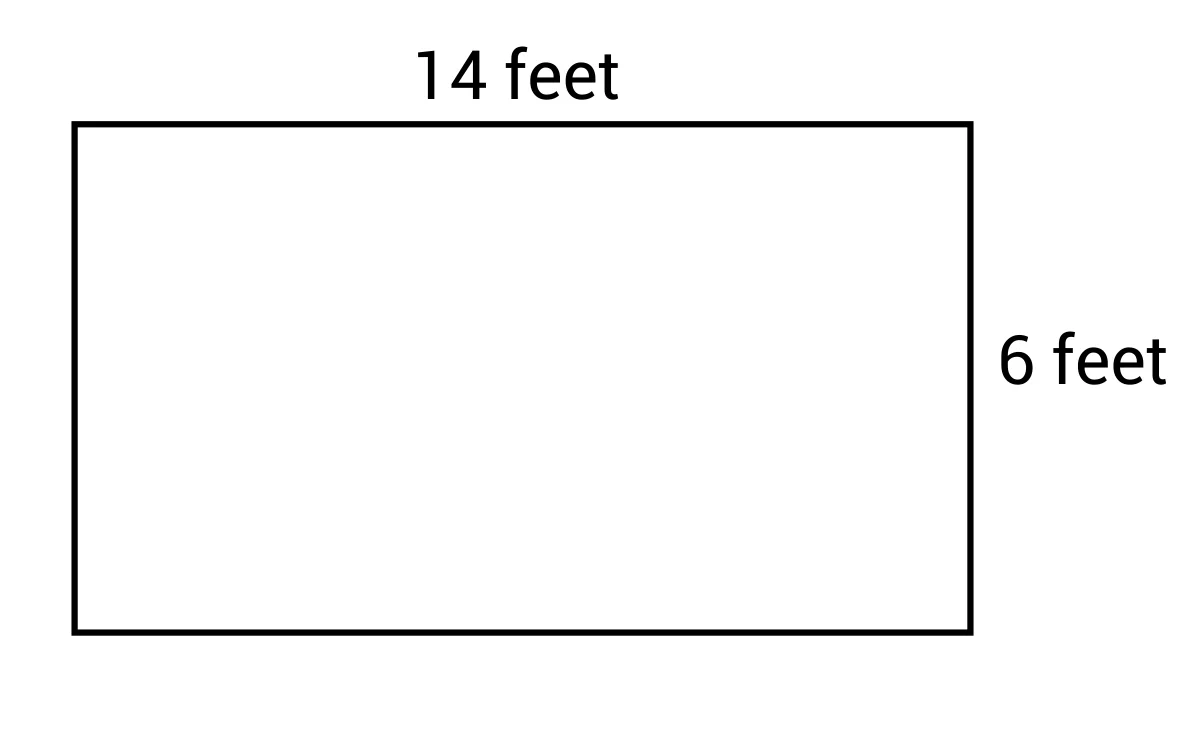
Common Mistakes to Avoid
While calculating the perimeter of a rectangle is straightforward, several common errors can lead to incorrect results. Here are some mistakes to watch out for and tips to avoid them:
- Confusing Length and Width
Ensure you correctly identify the length (\( l \)) and width (\( w \)) of the rectangle. The length is the longer side, and the width is the shorter side. Mislabeling these can lead to incorrect calculations.
Tip: Always double-check which dimension is the length and which is the width before you start calculating.
- Incorrect Formula Application
The perimeter formula for a rectangle is:
\( P = 2(l + w) \)
Some might mistakenly use \( P = l + w \), which only gives half the perimeter. Remember, you need to account for both pairs of sides.
Tip: Write down the formula and substitute the values carefully to ensure all steps are followed correctly.
- Calculation Errors
Simple arithmetic mistakes, such as adding or multiplying incorrectly, can lead to wrong answers.
Tip: Perform calculations slowly and double-check each step. Use a calculator if needed to ensure accuracy.
- Unit Mismatch
Ensure all measurements are in the same unit before applying the formula. For example, don't mix meters and centimeters without converting one into the other.
Tip: Convert all measurements to the same unit before beginning your calculations.
- Neglecting to Include Units
Always include the correct units in your final answer. Omitting units can make the answer unclear or incorrect.
Tip: Write the units alongside your final answer to avoid confusion.
- Rounding Too Early
If working with decimals, avoid rounding intermediate results too early as it can introduce errors in the final perimeter calculation.
Tip: Keep decimal values as precise as possible throughout the calculations and only round the final result if necessary.
By being mindful of these common mistakes, you can ensure accurate and reliable perimeter calculations for any rectangle.
Advanced Perimeter Concepts
Exploring advanced concepts related to perimeter calculations can deepen your understanding and broaden your problem-solving skills. Here are some advanced topics to consider:
- Perimeter of Composite Shapes: Learn how to find the perimeter of complex shapes composed of multiple rectangles or other polygons.
- Optimizing Perimeter: Discover strategies for optimizing perimeter in real-world scenarios, such as maximizing the enclosed area while minimizing the amount of fencing required.
- Perimeter in Three Dimensions: Explore how perimeter concepts extend to three-dimensional shapes, such as rectangular prisms or cubes.
- Irregular Shapes: Understand how to calculate perimeter for irregular shapes by breaking them down into simpler components or using approximation techniques.
- Perimeter in Engineering and Architecture: Delve into practical applications of perimeter calculations in fields like engineering and architecture, where accurate measurements are essential for designing structures and layouts.
- Advanced Problem Solving: Challenge yourself with advanced problem-solving exercises that require applying perimeter concepts in creative and non-standard ways.
By mastering these advanced perimeter concepts, you'll be better equipped to tackle complex geometric problems and make informed decisions in various academic and professional contexts.
Tools and Resources for Perimeter Calculation
Finding the perimeter of a rectangle can be made easier with various tools and resources available online. These tools not only help in quick calculations but also provide educational resources for better understanding. Below are some recommended tools and resources:
- Online Calculators
- - This calculator allows you to input different dimensions and units to quickly find the perimeter of a rectangle. It also provides detailed explanations and formulas.
- - An easy-to-use tool where you can input the length and width to find the perimeter. It also supports various unit conversions.
- Educational Websites
- - Offers detailed lessons on how to calculate the perimeter of a rectangle, complete with examples and practice problems.
- - Provides a range of perimeter worksheets and interactive activities suitable for different grade levels, helping students practice and master the concept.
- - Includes step-by-step instructions, common mistakes to avoid, and various example problems to reinforce learning.
- Interactive Tools and Games
- - Features interactive games and activities that make learning about perimeter fun and engaging for students.
- - An educational game that helps children learn about area and perimeter through interactive gameplay.
- Worksheets and Printable Resources
- - Offers customizable worksheets for teachers and students to practice calculating the perimeter of various shapes, including rectangles.
- - Provides free printable worksheets focused on perimeter calculations for different grade levels.
These tools and resources are designed to support students, teachers, and anyone interested in learning more about perimeter calculations. Utilizing these can enhance understanding and make the process of finding the perimeter of a rectangle straightforward and enjoyable.
Frequently Asked Questions
Here are some common questions and detailed answers about finding the perimeter of a rectangle:
- What is the perimeter of a rectangle?
The perimeter of a rectangle is the total distance around its boundary. It can be calculated using the formula:
\( P = 2(l + w) \)
where \( P \) is the perimeter, \( l \) is the length, and \( w \) is the width of the rectangle.
- How do I find the perimeter of a rectangle?
Follow these steps to find the perimeter:
- Measure the length (\( l \)) and width (\( w \)) of the rectangle.
- Add the length and width: \( l + w \).
- Multiply the sum by 2: \( 2(l + w) \).
- The result is the perimeter of the rectangle.
- Can I find the area of a rectangle if I know its perimeter?
Knowing the perimeter alone is not enough to determine the area. You need additional information, such as the length or width, to calculate the area. The area is given by:
\( A = l \times w \)
- Is the perimeter of a rectangle always greater than its area?
No, the perimeter of a rectangle is not always greater than its area. The relationship between the perimeter and area depends on the dimensions of the rectangle.
- Can the perimeter of a rectangle ever be equal to its area?
No, the perimeter and area of a rectangle measure different properties. The perimeter is the total distance around the rectangle, while the area measures the enclosed space. Thus, they cannot be equal.
- Why is it important to understand the perimeter of a rectangle?
Understanding the perimeter of a rectangle is important for various practical applications, such as:
- Determining the amount of fencing needed for a rectangular garden.
- Calculating the length of material required to frame a rectangular picture or mirror.
- Planning the dimensions of a room for baseboards or crown molding installation.
- Establishing property boundaries or laying out sports fields and playgrounds.
- How do the length and width of a rectangle affect its perimeter?
The perimeter of a rectangle increases as the length and/or width increase. For example, if you double the length and width, the perimeter also doubles:
Original dimensions: \( l \) and \( w \)
New dimensions: \( 2l \) and \( 2w \)
Original perimeter: \( 2(l + w) \)
New perimeter: \( 2(2l + 2w) = 2 \times 2(l + w) = 4(l + w) \)

Conclusion
Understanding how to calculate the perimeter of a rectangle is a fundamental skill in geometry that has numerous practical applications in everyday life. Whether you are a student learning the basics of geometry or a professional needing precise measurements for a project, mastering this concept is essential.
The perimeter of a rectangle is determined by the simple formula:
\[ \text{Perimeter} = 2 \times (\text{Length} + \text{Width}) \]
Throughout this guide, we have explored various aspects of perimeter calculation, including the definition of a rectangle, the basic formula, step-by-step calculation methods, practical examples, common mistakes to avoid, and advanced concepts. We have also provided tools and resources to assist in calculating the perimeter accurately.
By understanding and applying the principles discussed, you can efficiently determine the perimeter for any rectangular shape, whether for academic purposes, home improvement projects, or other practical uses. This knowledge not only aids in precise measurements but also enhances problem-solving skills and spatial awareness.
We hope this comprehensive guide has been informative and helpful. Keep practicing with the provided examples and problems to strengthen your understanding and proficiency. Remember, the ability to calculate the perimeter of a rectangle is a valuable skill that extends beyond the classroom and into real-world applications.
Thank you for reading, and we encourage you to explore further geometric concepts and their applications. The world of mathematics is full of exciting discoveries waiting to be made!
Video hướng dẫn cách tìm chu vi của hình chữ nhật. Tham gia cùng Mr. J để học cách tính toán chu vi một cách dễ dàng và chính xác.
Cách Tìm Chu Vi Hình Chữ Nhật | Toán Học Với Mr. J
READ MORE:
Video hướng dẫn cách tìm diện tích và chu vi của hình chữ nhật. Học cách tính toán dễ dàng và chính xác cho hình chữ nhật.
Cách Tìm Diện Tích và Chu Vi Hình Chữ Nhật
